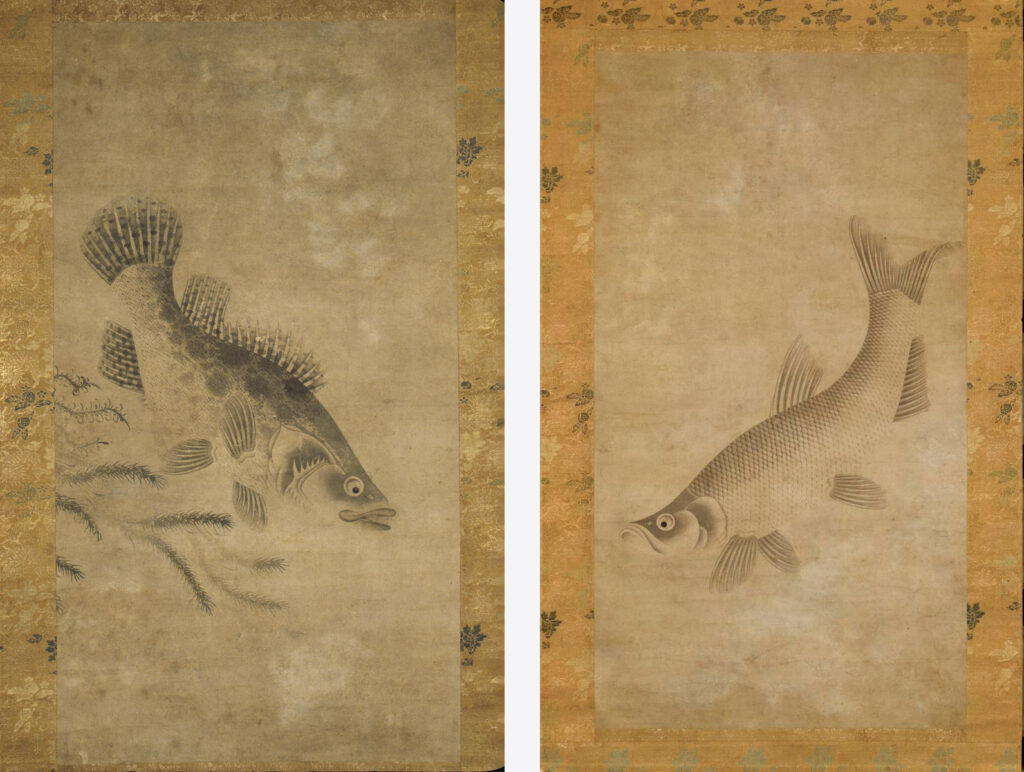The museum is closed for the Christmas holiday. Please come back on Friday, December 26.
The museum is closed for the Christmas holiday. Please come back on Friday, December 26.
Depictions of intriguing tales that have informed, entertained, and engaged audiences for centuries.
This selection of paintings, textiles, and lacquerware illustrates well-known historical stories and love romances, tales of popular deities and heroic figures, and anecdotes of filial sons and celebrated scholars in Chinese art. For centuries, these fascinating images and their inscriptions were used to inform, entertain, and instruct various audiences, whether for religious persuasion, social engagement, cultural statement, or moral teaching. A showcase of these narrative or figural images in various mediums illuminates the deeply rooted visual cultural tradition that has existed in Chinese society across dynasties.

Because fish appear to flow in water freely, unburdened by worrisome thoughts, the joy of fish became a popular subject in Chinese art. It was closely related to a famous Daoist story, which suggested that true understanding could only be acquired intuitively, not through rational study. Here, it is amplified by visual puns. The freshwater perch on the left represents nobility and abundance, as its name in Chinese, guiyu, is a homonym for those two words. With its upturned lips and piercing eye, the carp (liyu) on the right exhibits a human-like expression full of humor in pursuit of fame and fortune. Show more . . . The paintings bear the seals of Lai’an, who was probably a late 13th-century monk artist. During the 12th and 13th centuries, Chinese Chan (Zen) art and culture was an important influence in Japan; while many Chinese Chan artists, such as Liang Kai (1140–1210) and Muqi (1210–1269), were neglected in Chinese history, their paintings were recorded and valued in Japan. Through Japanese collectors and scholars, these Chinese artworks also received scholarly attention in the West in the 19th century. This pair of scrolls may have once flanked a central Buddhist painting as part of a triptych in a temple. Triads consisting of a Buddha image flanked by a pair of bodhisattva images were common in Buddhist art. In Chan versions, fish, gibbons, and other animals sometimes replace bodhisattvas. This substitution would present a shock to many viewers — leading, for some, to an expanded understanding of the inconsequential nature of the world. Japanese monks often borrow secular images to serve in spiritual contexts (such as Muqi’s Six Persimmons and Chestnuts, a pair possibly cropped from a handscroll). The approach of showing a single object against a spacious background is also characteristic of Chan art. Show less
Top image: Stories About Deity Tianhou and Her Miracles–6: Entering into the Imperial Ritual Edict (detail), 1765, by Lu Can (Chinese, active 1760-1800). Ink and colors on paper. Asian Art Museum, Transfer from the Fine Arts Museums, Trust of Dorothy Yates Foster, 1997.16.6. Photograph © Asian Art Museum.